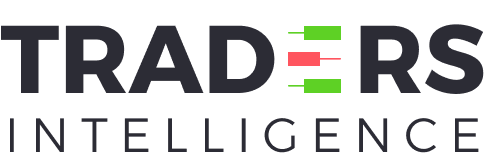
Medifast Inc. (NYSE: NYSE:MED), a global health and wellness company, faced a challenging third quarter in 2024 with a significant decline in revenue and active coaches. Despite the revenue drop of 40.6% year-over-year, the company exceeded EPS expectations.
The earnings call on November 7, 2024, highlighted Medifast’s strategic transformation to capitalize on the growing GLP-1 medication market for weight loss.
CEO Dan Chard announced the launch of a new product line, OPTAVIA ASCEND, and a focus on integrated solutions for the evolving weight loss market. The company also reported a strong financial position with $170 million in cash and no debt.
Key Takeaways
- Medifast’s Q3 2024 revenue fell to $140.2 million, a 40.6% decrease from the previous year.
- The company reported a net income of $1.1 million or $0.10 per diluted share.
- Approximately 30,000 active earning OPTAVIA Coaches, a decline of 36.3% year-over-year.
- Gross profit margin saw a slight improvement to 75.4%.
- Medifast plans to launch OPTAVIA ASCEND in early 2025, targeting the GLP-1 medication market.
- Marketing expenses are projected to be between $20 million and $25 million for 2024.
- The company terminated a credit agreement to save on commitment fees and expects no need for external financing through 2025.
Company Outlook
- Q4 revenue is estimated to be between $100 million and $120 million, with a loss per share between $0.10 and $0.65.
- Medifast anticipates improved performance starting in 2025 due to new product offerings and a refreshed website.
- The strategic focus will be on the resolution season starting in early 2025, aligning spending with new product availability.
Bearish Highlights
- Ongoing challenges in customer acquisition due to competition from GLP-1 medications.
- Reduced client acquisition efforts leading to a declining top-line forecast for Q4.
Bullish Highlights
- A 40% increase in coaches supporting clients on GLP-1 medications.
- Collaboration with LifeMD showing promise, with plans to expand access to their customer base.
Misses
- Despite exceeding EPS expectations, the company experienced a steep decline in revenue and active coaches.
Q&A Highlights
- The call concluded without further questions after CEO Dan Chard mentioned the upcoming Stephens Annual Conference.
Medifast is navigating a period of transition as it adapts to market changes brought on by new FDA-approved GLP-1 medications for weight loss.
The company’s strategic shift includes the development of tailored program offerings and the upcoming launch of the OPTAVIA ASCEND product line. With a focus on enhancing customer experience and efficiency in marketing, Medifast is positioning itself for a stronger performance in the coming years.
The collaboration with LifeMD and the introduction of new vitamin and supplement offerings are part of this plan to support clients through medically-assisted weight loss and beyond.
Despite the current downturn, Medifast’s strong financial position with significant cash reserves and no debt suggests resilience and the potential for recovery as it moves forward with its strategic initiatives.
InvestingPro Insights
Medifast’s recent financial performance and strategic pivot are reflected in several key metrics and insights from InvestingPro. Despite the challenging quarter, the company maintains a strong financial foundation, as evidenced by an InvestingPro Tip indicating that Medifast “holds more cash than debt on its balance sheet.” This aligns with the company’s reported $170 million in cash and absence of debt, positioning it well for its strategic transformation.
The company’s impressive gross profit margins, highlighted as an InvestingPro Tip, are consistent with the reported 75.4% gross profit margin in Q3 2024. This strength in profitability could provide Medifast with the financial flexibility needed to invest in its new OPTAVIA ASCEND product line and marketing initiatives.
InvestingPro Data shows a Price to Earnings (P/E) ratio of 7.05, suggesting that Medifast is trading at a relatively low earnings multiple. This valuation could indicate that the market has already priced in the current challenges, potentially offering an opportunity for investors who believe in the company’s strategic shift towards the GLP-1 medication market.
However, the data also reflects the company’s recent struggles, with a significant revenue decline of 43.9% over the last twelve months. This metric aligns with the reported 40.6% decrease in Q3 revenue and the company’s cautious outlook for Q4.
Interestingly, despite these challenges, Medifast offers a substantial dividend yield of 35.09% according to InvestingPro Data. This high yield, combined with the InvestingPro Tip that the company “pays a significant dividend to shareholders,” may be attractive to income-focused investors, although sustainability of such high payouts should be carefully considered given the current business headwinds.
For investors seeking a more comprehensive analysis, InvestingPro offers 13 additional tips for Medifast, providing a deeper understanding of the company’s financial health and market position as it navigates this transformative period.
Full transcript – MEDIFAST INC (MED) Q3 2024:
Operator: Greetings, and welcome to the Medifast Third Quarter 2024 Earnings Conference Call. At this time, all participants are on a listen-only mode. A brief question-and-answer session will follow the formal presentation. [Operator Instructions] As a reminder, this conference is being recorded. It is now my pleasure to introduce your host, Steven Zenker, Vice President of Investor Relations. Thank you, sir. You may begin.
Steven Zenker: Good afternoon, and welcome to Medifast’s Third Quarter 2024 Earnings Conference Call. On the call with me today are Dan Chard, Chairman and Chief Executive Officer; and Jim Maloney, Chief Financial Officer. By now, everyone should have access to the earnings release for the quarter ended September 30, 2024 that went out this afternoon at approximately 4:05 p.m. Eastern Time. If you have not received the release, it is available on the Investor Relations portion of Medifast website at www.medifastinc.com. This call is being webcast, and a replay will also be available on the company’s website. Before we begin, we would like to remind everyone that today’s prepared remarks contain forward-looking statements, and management may make additional forward-looking statements in response to your questions. The words believe, expect, anticipate and other similar expressions generally identify forward-looking statements. These statements do not guarantee future performance and therefore, undue reliance should not be placed on them. Actual results could differ materially from those projected in any forward-looking statements. All of the forward-looking statements contained herein, speak only as date of this call. Medifast assumes no obligation to update any forward-looking statements that may be made in today’s release or call. And with that, I would like to turn the call over to Medifast’s Chairman and Chief Executive Officer, Dan Chard.
Dan Chard: Thanks, Steve, and thanks to everyone for joining us on the call today. With me is Jim Maloney, Medifast’s CFO. We’ll give some color on our third quarter results and provide an update on the progress we’re making on our business transformation. The weight loss segment of the health and wellness industry continues to experience profound change; widespread consumer adoption of GLP-1 medications has fundamentally shifted the way people think about weight management and health. The growth is in many ways staggering given that it’s not quite 12 months since the FDA approved the second generation of GLP-1 medications for use in weight loss regimens. A recent Kaiser Family Foundation poll showed that one in five US overweight and obese adults have used one of these medications. Like many of our peer set, we’ve naturally seen significant impact on our business fundamentals. Adjusting to market realities has not been easy. However, we continue to believe that there is a significant opportunity to return the company to growth. Our goal is to build the health and wellness company of the future, one that is designed to grow in a GLP-1 world. With that in mind, we’ve been steadily executing on our strategic transformation plan, focusing on our core mission, while broadening reach and improving solutions to address the changing nature of the marketplace. We continue to make progress in several key areas and are working with OPTAVIA coaches and customers, as we shift to reflect this new environment. To establish a thriving health and wellness business that can grow in today’s market, we’ve developed distinct coach-supported program offerings tailored to meet the unique needs of three specific customer segments on their health and wellness journeys. The first offer is targeted at individuals using GLP-1 medications as a core element of their weight loss program. The second offer is for people looking to maintain weight loss and improve health when they come off GLP-1 medications for whatever reason, those could include cost, side effects, or any other cause. And the third offer is for people who have never used medications and want to use coach supported habit-based programs as the core of their weight loss journey. I want to take a look at each of those target markets separately. Starting with those who want to use GLP-1 medications at the core of their weight-loss efforts. We’ve expanded training for our independent OPTAVIA coaches to better equip them to help customers develop a healthy lifestyle, while using GLP-1 medications. Currently, over 95% of coach leaders have completed this specialized training and according to our latest survey, approximately 40% of active coaches are now supporting at least one client on a GLP-1 medication. Research commissioned by Medifast suggests the GLP-1 support market could grow to $50 billion or more by 2030, making this audience a core focus for our business. GLP-1 medications have been shown to be highly effective in aiding healthy and lasting weight loss when used in conjunction with healthy habits like diet and exercise. As such, we believe there is strong compatibility with our experience of helping people through our coach-guided Habits of Health Transformation System. Around 12% of our customers have used GLP-1 medications over the last 12 months compared with around 4% at the beginning of the year. We expect this penetration to increase over the coming months as coaches continue to successfully help these individuals with their weight loss goals and in making a healthy lifestyle second nature. The next target segment reflects growth in the number of people transitioning off medications for any reason. We’re very encouraged by the potential of OPTAVIA to help people maintain weight loss and improve health when they stop using medications. External research shows that individuals who stop medication usage regained two-thirds of their lost weight and failed to maintain associated health improvements if they do not adopt a modified healthy lifestyle, during or after using GLP-1 medications. This is particularly important because of early indications that GLP-1 medications are not being used for the long-term. Recent KFF analysis showed that about one-third of users quit taking the medication after six months and by one year, this number can rise to half or more. That same poll showed that one in eight U.S. adults have taken GLP-1 medications at some point, with only half saying that they are currently on the medication. By 2030, our internal estimates suggest that as many as 50 million or more people could have started and then stopped GLP-1 usage. A huge potential market. We are actively exploring this area in more depth and expect to launch a program later this year that meets this group’s needs. Lastly, we continue to place focus on finding new customers and reactivating past customers who have no interest in GLP-1s, but who are motivated to lose weight by focusing on wellness, healthy habits and a healthy lifestyle. Central to our efforts in this area is an initiative to improve overall customer experience, whether new to our program or reactivating after an absence. Improvements include better tracking dashboards and advanced data capabilities, enabling customers and coaches to stay aligned on the progress and on their goals and allowing greater personalization. We saw an increase in engagement for those on our newly enhanced website in recent months with an average session time of up double-digits and unique visitors and sessions also increasing. Regardless of Need State segment, our integrated coach-supported lifestyle-based approach accurately reflects the behaviors and priorities of the consumer in a positive way. We differentiate ourselves by offering holistic solutions that include scientifically developed nutrition products and individualized coach and community support as well as access to weight loss medications through LifeMD where clinically appropriate. With new products in development as well as enhanced technology to help coaches provide a highly personalized experience to each of their customers, our offer has never been more compelling. Personal coaching, a support community, tailored plans and personalized solutions have always been at the heart of our offer, and they remain just as relevant in a GLP-1 world. We’ve spent 40-plus years walking alongside people and offering integrated solutions to those learning to live healthy lifestyles. Now with the evolving dynamic of the weight loss market, we’re positioning Medifast to address a broader spectrum of customer needs, working alongside our independent OPTAVIA coaches and in collaboration with LifeMD’s physicians. As part of that strategy, we need to ensure that we have the right products, pricing strategies and positioning in place to drive engagement and retention. We expect to launch a new program at the beginning of 2025, featuring a series of entirely new products under the new OPTAVIA ASCEND brand. These products and associated meal plans are specifically designed for those on GLP-1 medications. We also plan to simultaneously launch a supplement pack with vitamins and minerals to help support the program and to provide a complete and balanced diet. This program will be competitively priced to ensure we capture consumers who are already spending money on the medications themselves. OPTAVIA ASCEND products are high in protein and fiber to help retain lean muscle mass and promote digestive health and also include calcium to support bone health. These products will be paired with the support of a coach and community and access to GLP-1 medications through LifeMD. OPTAVIA ASCEND also supports a new program designed to facilitate the key transition and weight maintenance phase of customers’ weight loss journey, empowering lifestyle changes and providing essential nutrients. We know that once customers lose the weight, OPTAVIA Coaches can teach them how to keep it off. OPTAVIA ASCEND has a different nutrition profile and the plan was developed in response to coach feedback, requesting a simpler, more tailored approach for clients transitioning from active weight loss to weight maintenance. We’re also testing starter kits for new customers who want to try OPTAVIA before making a longer-term commitment. This program allows us to show customers the effectiveness of our products and familiarize them with our coach community at an attractive initial price point. By offering additional ways to drive affinity with our program, we believe we can bring in more customers, which in turn will drive higher numbers of active coaches. Development of these products took about half the time of previous launches. And as we move through 2025 and beyond, we’ll continue to consider further product line extensions and modular add-ons that will extend beyond weight loss and support those using medications. So, we have a differentiated offer that is designed specifically for the key audience need states and we have products and programs in place to drive sampling, engagement and retention, as well as to support the transition to long-term weight maintenance. We’re about to embark on a clinical study to assess the health outcomes associated with the integration of OPTAVIA nutrition and lifestyle programs alongside medications. We believe this study will provide valuable insights into the performance of our products and our support for customers on their health journey. The results will add to our existing scientific evidence, as we continue to offer differentiated holistic lifestyle programs that serve all clients from weight loss to weight maintenance. Through all of this, we must use marketing and partnerships to maintain competitive white space, drive brand awareness and power client acquisition. Our company-led marketing campaigns reflect an approach that targets key demographics across the 3 core groups I mentioned earlier. This is a competitive market, and it’s not easy breaking through the noise in a crowded environment. We have learned some valuable lessons and have been fine-tuning our strategy with a focus on channels that yield the highest return on investment. We are optimizing spending accordingly and have scaled back in less effective areas. We now expect total marketing spend for 2024 to range between $20 million and $25 million. This reflects a disciplined approach that prioritizes efficiency and value. Our collaboration with LifeMD also continues to show promise. As we begin piloting joint marketing campaigns, highlighting the complementary solutions that both companies offer. These efforts should help us reach new customers and broaden our customer acquisition strategy. The full impact of all these initiatives will take time to materialize. But with resolution season coming up, we see real opportunity. With our newly refreshed website up and running, as well as the availability of our new products and enhanced interface, we are well positioned to begin to see improved performance in 2025 and beyond. As we continue to develop and refine our solutions, we feel cautiously optimistic about our ability to drive further adoption and engagement. Our strong balance sheet gives us the financial flexibility needed to invest in these key growth initiatives for the business. We’re managing our capital prudently, focusing on areas that we believe will deliver long-term value for our stakeholders. We have also identified additional cost savings opportunities as part of our ongoing Fuel for the Future initiative. And we believe that these further — these will further strengthen our financial position as we execute our transformation. The weight loss market has been revolutionized and Medifast is committed to moving with it to meet changing needs. Our focus on providing integrated solutions that combine lifestyle modification, clinical guidance and community support puts us in a strong position, and I’m confident in our team’s ability to execute on our strategy to position the company for growth in the quarters and the years ahead. Now, I’ll turn it over to Jim to review the quarterly financial details.
Jim Maloney: Thank you, Dan. Good afternoon everyone. Third quarter 2024 revenue was at the upper end of our guidance range and EPS was above the high end of range as we move forward with the significant business initiatives Dan just mentioned and strategically timing our company-led customer acquisition spending. Revenue for the quarter was $140.2 million, a decrease of 40.6% versus the year earlier period, primarily driven by a decline in the number of active earning OPTAVIA Coaches and lower productivity per active earning OPTAVIA Coach, customer acquisition continues to be impacted by competition from GLP-1 medications and consumer spending patterns. We ended the quarter with approximately 30,000 active earning OPTAVIA Coaches, a decrease of 36.3% from the third quarter of 2023. Average revenue per active earning OPTAVIA Coach for the second quarter was $4,672, a year-over-year decline of 6.7%, reflecting the continued headwinds to customer acquisition. Gross profit decreased 40.4% year-over-year to $105.7 million, driven by lower revenue, gross profit margin improved 20 basis points to 75.4%. SG&A expense was down 31.8% year-over-year to $103.6 million, primarily reflecting lower compensation expenses due to lower volumes and fewer active earning coaches as well as reduced cost for coach-related events including convention and a decrease in employee compensation, partially offset by cost for our company-led customer acquisition initiatives. SG&A as a percentage of revenue increased 950 basis points to 73.9%, primarily as a result of the loss of leverage of fixed costs due to lower sales volumes in cost for our company-led acquisition initiatives. On a non-GAAP adjusted basis, which excludes the final $1.7 million of expenses related to the company’s overall $10 million collaboration with LifeMD, SG&A decreased 32.9% to $101.9 million and moved 830 basis points higher as a percent of revenue to 72.7%. Income from operations was $2.1 million in the third quarter of 2024 versus $25.5 million in the prior period, driven by lower gross profit, partially offset by lower SG&A. As a percentage of revenue, income from operations was 1.5% in the third quarter compared to 10.8% in the prior year period. On a non-GAAP adjusted basis, which excludes the adjustments described previously, income from operations decreased to $3.8 million. As a percentage of revenue, non-GAAP adjusted income from operations was 2.7%, a decrease of 810 basis points from the year ago period. The effective tax rate in the quarter of 28.5% was higher than the 12.9% recorded in the prior year’s third quarter due to a decrease in the tax benefit for donations of inventory compared to 2023. On a non-GAAP adjusted basis, the effective tax rate in the third quarter was 26%. Net income in the third quarter of 2024 was $1.1 million or $0.10 per diluted share compared to net income of $23.1 million or $2.12 per diluted share in the year earlier period. On a non-GAAP adjusted basis, net income in the third quarter of 2024 was $3.9 million or $0.35 per diluted share. Turning to our balance sheet. We ended the quarter with $170 million in cash, cash equivalents and investments and no interest-bearing debt. This is up from $150 million as of December 31, 2023. Given our healthy cash position that is projected to be maintained through the expiration of our credit facility and beyond, we have canceled our credit agreement effective October 30. This action was made as part of our Fuel for the Future initiative as we incurred $50,000 of cash expenses related to the termination, and we will achieve annual savings of approximately $500,000 in commitment fees. The credit agreement termination was done in accordance with its terms. As of the date of the termination, the company did not have any borrowings under the credit agreement, and the company was in compliance with all covenants. In addition, the company did not incur any premium or early penalties in connection with the termination. Now I will turn to our guidance. We are expecting fourth quarter revenue to range from $100 million to $120 million, reflecting a continued decrease in the number of active earning OPTAVIA Coaches as a result of near-term challenges to customer acquisition due to the growing acceptance of GLP-1 medications in the marketplace. We expect our loss per share for the quarter to range from $0.10 to $0.65. The guidance includes expectations of spending $7 million during the quarter on company-led marketing. However, it excludes any gains or losses from changes in the market price of our LifeMD common stock holdings, which we are unable to estimate. As we discussed on our last call, we have made a conscious decision to better align our spending with the availability of the full complement of our new offer, which includes the new products and enhanced customer experience that we expect will be ready for the start of resolution season at the beginning of 2025. In summary, we believe that continuing to execute our key business initiatives and supplementing those initiatives with marketing dollars at the right time will allow us to take full advantage of the changes we are making today. With that, let me turn the call back to the operator for questions.
Operator: Thank you. We will now be conducting a question-and-answer session. [Operator Instructions] Our first question comes from Jim Salera with Stephens Inc. Please proceed with your question.
Jim Salera: Yes, good afternoon. Thanks for taking our question. I wanted to start maybe on the marketing spend because, if my notes served me correct, I think initially, we had talked about like $30 million in company-led marketing for the year. If I kind of back into where we’re at now, Jim, based on what you said for 4Q, that’s about half, $7 million in 3Q and $7 million in 4Q. And then in the supplemental, you mentioned scaling back on some less effective areas. So, maybe you could just give us some color on some of the areas that you’ve scaled back the spend and for the areas that you still are driving some of the company led marketing, what the response has been so far and any learnings that we might be able to take into 2025.
Jim Maloney: Thanks for the question, Jim. So, yes, we did spend $7 million this past quarter, and we are intending on spending an additional $7 million in Q4. So year-to-date, we are at $17 million through September 30. And we’ve made a lot of progress in this area. As we mentioned to investors and in our last several calls, this is a new initiative for the company, and we continue to evaluate this marketing effort. We are making progress in this area, and we are continuing to look at what are the best ways to optimize these initiatives to improve our customer acquisition costs and the timing of that spend, we feel it’s better to do it in other times of the year, and that’s why some of the pullback happened in Q3. So you’re correct in saying that we were going to spend more amounts in 2024, but we believe that it’s more appropriate to invest in this spend in the coming months and years or I’m sorry, in the months and quarters. So you’ll see us continue to do this type of spend into 2025 through resolution season. So hopefully, that answers your question.
Jim Salera: Yes. There maybe as a follow-up — are there any particular kind of channels or formats on the company-led advertising side that you guys have seen more or less success with? I mean, know there’s kind of different what you do on TV or social media, but have you found more or less engagement through any one of those particular advertising channels.
Dan Chard: Yes. Jim, this is Dan. I think we’ve — as Jim said, we’ve continued to optimize the social media channels have been highly effective. Interestingly, some of the ways we’ve been capturing just e-mail or those who start to interact with our website have been some of the more effective ways for us to drive new clients. I’d also add that it’s — 90% of our client acquisition still comes through our coach channel. So, it’s important even though the company-led acquisition is a new part of our client acquisition strategy, it’s still a smaller part of the whole. And it’s — now it’s been a little bit under a year since we started to modify our message and incorporate a GLP-1 medication message that’s available to us through LifeMD. And just to kind of highlight some of the things we said in our prepared remarks. Because I think I don’t — I want to make sure those don’t get lost. We now have 95% of our coach leaders who have been trained to support GLP-1 medications. And I think that’s — training is important, which then means that they train the rest of our coaches. But I think the proof of that that starting to work is 40%, that was up from 33% last quarter, our coaches are now supporting at least one client on a GLP-1 drug, and that translates into roughly 12% of our current client base either have been or are currently on GLP-1 medications and — over the last 12 months. And I think one of the things we really feel is important as well as the product development initiatives that have taken place over the last several months that will start to roll out at the beginning of this next year and resolution season. So, these are products under the OPTAVIA Ascend brand that have been specifically formulated to support people on GLP-1 drugs or — and this is — the second part is important, those who are moving to a maintenance program. And that’s true for both, those who are transitioning off GLP-1 drugs as well as off of our traditional program that is coach-led habit space. This is an area that our coaches have been talking about for a long time and asking for, for a long time. And this, along with the clinical research that we anticipate doing to prove out that our lifestyle program is highly complementary of people on GLP-1 medications or those who are often maintaining, I think, is an important part for our future. So, just wanted to add those comments to your question about where we’re seeing the most traction.
Jim Salera: Yes. That’s great. And maybe if I could sneak one more in. If my kind of back of the envelope math, it doesn’t fail me. The midpoint of your 4Q guidance on the top line, implies like a 200 — a little bit less than a 200 basis point deceleration quarter-over-quarter. Is there a reason that you think that the rate of decline of the top line would accelerate into 4Q given that we’ve seen it get kind of gradually better sequentially over the years? Is that just with West marketing support or you got this product rollout that doesn’t hit until 2025? Just any thoughts on that.
Jim Maloney: Yes. I mean we are — when you look at our guidance at the midpoint we are obviously still having continued pressure on client acquisition and with that, it’s impacting the number of coaches. So, when you think about the coming quarter, we are scaling back some of our company-led acquisition in advertising. And this — that part of the year, Jim, due to seasonality, we feel is we wanted to make sure that we gave guidance that we were certain that we can do our best in achieving. So — the — if you look back at the last several years, Q4 has been more difficult than other quarters as people aren’t thinking about their health and wellness at that point and better in January and beyond.
Jim Salera: Great. Appreciate all the thoughts guys. I’ll hop back in queue.
Operator: Our next question comes from Linda Bolton-Weiser with D.A. Davidson. Please proceed with your question.
Linda Bolton-Weiser: Yes. Hello. So, I was wondering, of the 12% of your clients who were on or currently are on a GLP-1 drug. Can you give us some ideas to what portion got their script from LifeMD?
Dan Chard: We’re not putting that number out there publicly. I mean it’s — I’ll say it’s — mean, obviously, it’s a mix between the two. And I think what we’re seeing is that a portion of those people who are coming in, that portion of that 12% are some who have been transitioning off. So they’re finding us in different ways. So some of those individuals have their script through their own physician and transitioned off and are looking for a way to help them maintain their weight loss and others have come through LifeMD. What I will say is, we have some very successful Coach groups who are working very closely with the LifeMD physicians, who are really specialized in this area. And as we’ve continue to improve the integration of our technology together, that experience is becoming very attractive to the way our Coaches do business. So we anticipate that number will continue to improve and become a more central part of how our coaches support those groups who are looking for medical supported weight loss.
Linda Bolton-Weiser: So I’ve actually signed up in the last couple of months with LifeMD for [indiscernible] compounded semaglutide and I asked my clinician when I was meeting with her online about — well, I ask specifically about OPTAVIA. She did not offer the information. And then when asked about OPTAVIA, she had never heard of it or she vaguely had heard of it, but she didn’t know much about it and she said she didn’t know much about it. So I guess, I’m just wondering like what’s the value of the partnership with LifeMD. If their clinicians are not oriented toward helping people that might want the services of OPTAVIA like why didn’t the clinician know about OPTAVIA?
Dan Chard: Yes, I think your experience is probably different than most. The LifeMD has a group of trained physicians who have been trained on the OPTAVIA program. And specifically, our technology kind of routes those customers who come through our website or through a coach to that group of physicians. It sounds like you may not have gone through that process. I don’t — I mean — I think we could kind of look at the process you use. But if you went to LifeMD on your own rather than through your coach or through our website, you may have gotten a physician who is supporting the LifeMD program in general rather than those physicians we’ve been specifically trained to support OPTAVIA customers or yes, I think that’s probably what happened. But I’d have to give more details.
Linda Bolton-Weiser: So it’s not — the whole partnership is not designed for you to take advantage of their customer base. It’s more for your customer base, they have access to LifeMD, right?
Dan Chard: The initial phase of the collaboration is for our coaches and their clients to offer access to medically supported weight loss through LifeMD. The second phase, which we’re starting to integrate now, and I mentioned in the prepared remarks, has to do with co-marketing. And leveraging the program, the lifestyle program to support their patients who are either looking for a lifestyle program or those who are potentially transitioning off. So, we’re at the very beginning of that part of it, but you’re correct. That the initial phase has been largely for our customer base. But the second phase is to access their customer base as well to leverage that in some different ways.
Linda Bolton-Weiser: Okay. So, switching a little bit to the cost side. I was a little surprised to see the magnitude of the loss expected in the fourth quarter, I guess it’s deleverage more than anything. But the clinical trials that you talked about or the clinical studies, is there a cost associated with that? And does that spending start in the fourth quarter or does it start in 2025?
Jim Maloney: Linda, the majority of the cost of the studies will occur in 2025 and beyond. So, very little will be spent in Q4. So, you’re correct in saying that the leverage on the fixed cost due to volume pressures is impacting us in Q4 also we’re investing — we’re continuing to invest in marketing, and we’re looking at the best ways to go about doing that. There are also is some timing differences. So, we did do better versus our guidance on the bottom-line in Q3 that that shifted into Q4. Some of was work that we’re doing with the plan that Dan mentioned regarding OPTAVIA Ascend.
Linda Bolton-Weiser: Okay. But in terms of the clinical studies, I mean I’m not a drug person. So I mean I don’t know what to imagine for the cost of such a thing? Is it like $10 million or $15 million or $50 million? Like what type of costs are we talking about for these studies that you’re planning?
Jim Maloney: Yes. So right now, the initial estimates, most of it will occur in 2025 and beyond would be less than $2 million.
Linda Bolton-Weiser: Okay. And then, in terms of the vitamins and supplements that you talked about offering in 2025, are these as well the new programs going to be ready like right at January 1 when people are doing their resolution or a little before January 1. Like when are we actually going to see them kind of launch?
Dan Chard: We’ll be introducing those 2 coaches in the latter part of this year, so basically, next month, and then they will be introduced for use with new clients and our current client base during resolution season. I think just to give you a little bit of insight in terms of why we’ve done that, as you know, our traditional approach with our products has been to include the vitamin supplements inside of the product. And because there’s a — so this new product set was tested with people on GLP-1 drugs, as well as those who are transitioning and going into weight maintenance. And so, we pulled the vitamins out of the — our fuelings or what we’re referring to in this line as mini mills and to improve the taste profile. And we were successful in doing that and then we’re providing them a supplement so they can be taken separately. So, we think it provides a better product experience for this new segment of consumers. And yes, it will be ready for resolution season.
Linda Bolton-Weiser: And so can you give us some rough idea as to the price point? Is it like a vitamin pack or something? Is it a monthly cost of like $30, $40? Like can you give us some idea?
Dan Chard: Those are all being discussed internally. We’re going to be announcing that shortly. So there’s more to come on that as we launch that product in the coming weeks.
Linda Bolton-Weiser: Okay. And then my last question was just on what you said about cash flow or cash balance. You said your cash balance that it is now you expect to continue as the cash balance for how long? I didn’t quite understand what your comment was there.
Jim Maloney: Yes. I mean we basically are looking at our forecast. And what we were attempting on saying was that, we believe that the credit facility will not — would not be used, so we decided to cancel it. The expiration of that credit facility is in — was in 2026, and we had really no intention on using it unless we did something inorganically, and then we would need a different type of facility, and it wouldn’t be a revolver. So, we made the conscious decision to cancel it and save the fees that we’re paying on that credit facility because at least at this point in time, we’re not — there was no need for it. Obviously, if things change, we would be working with our banking partners to reestablish a facility when needed.
Linda Bolton-Weiser: Okay. So what you’re just basically saying is — so you don’t expect to need financing to fund your operations or something in 2025. That’s basically what you’re saying, right?
Jim Maloney: That is correct. That’s exactly right.
Linda Bolton-Weiser: Yes. Okay. And then do you have the operating cash flow number either in the quarter or the nine months year-to-date?
Jim Maloney: The operating — well, I can provide that to you offline, Linda.
Linda Bolton-Weiser: Okay. All right. Those were all my questions. thank you very much.
Operator: There are no further questions at this time. I would now like to turn the floor back over to Dan Chard for closing comments.
Dan Chard: I want to thank you all for joining us today, and we look forward to seeing many of you at the upcoming Stephens Annual Conference that will take place in several weeks. Have a good evening.
Operator: This concludes today’s teleconference. You may disconnect your lines at this time. Thank you for your participation.
This article was generated with the support of AI and reviewed by an editor. For more information see our T&C.






